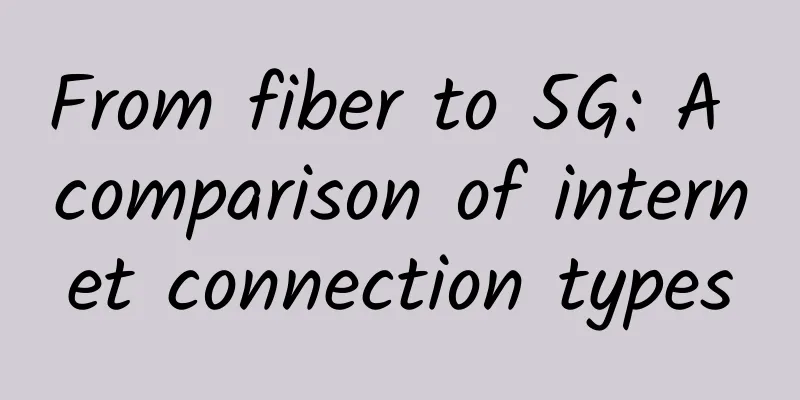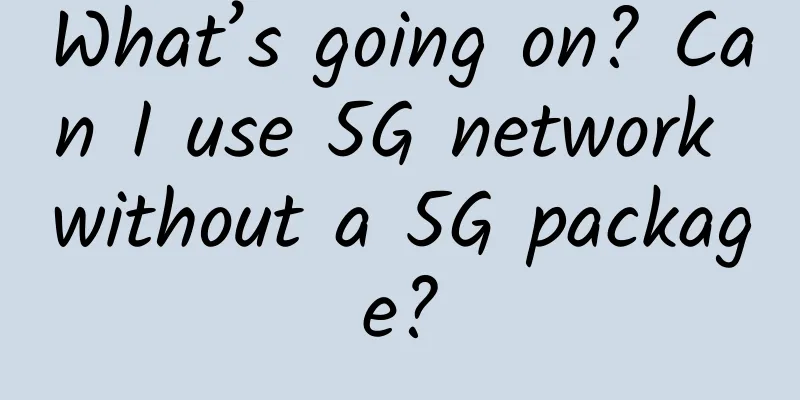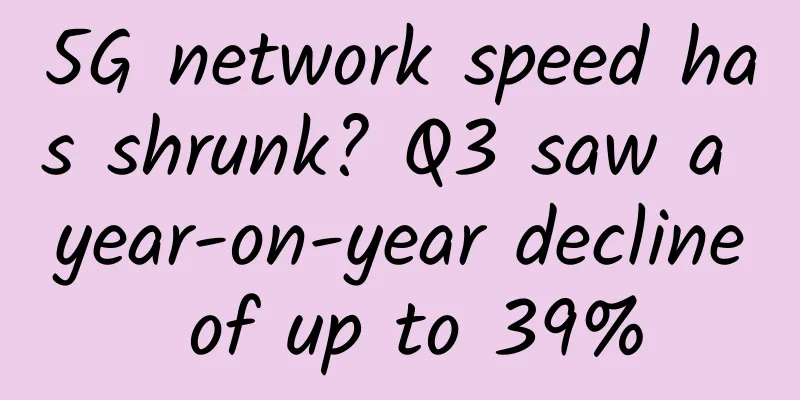From fiber to 5G: A comparison of internet connection types

|
Connecting to the internet has never been easier: whether you're chatting in a coffee shop or installing a smart smoke detector, information is being uploaded to the internet everywhere. But there are more options than ever before, so it can be difficult to decide which technology is best for you. We'll walk you through all the main types of internet connections and how to choose the best one.
Briefly analyze your optionsEvery Internet connection is defined by its technology—how the connection uploads and downloads Internet information. DSL : Short for "Digital Subscriber Line," DSL uses existing phone lines to send data between your computer and the Internet. Information is transmitted at a different frequency than voice calls. DSL is widely available and connects directly from your ISP to your home. Cable : Data is transmitted over electricity, via coaxial cables built within communities for internet or cable TV. Widespread availability, except in more rural and isolated areas. Satellite : Your computer sends information via an antenna to a satellite orbiting the Earth, which then communicates with the Network Operations Center to get the data you requested. Cellular : Mobile broadband allows you to connect to the internet wirelessly anywhere, anytime, through cell towers, using your mobile device or hotspots to connect to other devices. Fiber optic : Similar to cable, but it uses small glass strands to transmit information as light. Minimal availability and construction cost – mostly accessible in large cities. “In theory, the growth potential of fiber is unlimited in a way that no other physical medium can… In an ideal world, all Internet connections would be fiber.” - Trevor Textor, Project Manager, Rural IT and Connectivity Consultant Speed is the decisive factorFor consumers, the most obvious difference between these connection types will be speed. Each technology offers a different range of connection speeds, which will affect the time it takes to upload, download, stream, and browse. DSL is generally the slowest internet, offering customers a choice between 1.5Mbps, 3Mbps, 5Mbps, 7Mbps, 12Mbps, 24Mbps, and (rarely) 40Mbps. Considering the median home internet speed reported by the FCC is 72Mbps, DSL options cater to a minority of light internet users. These speeds are enough for some light web browsing and sending emails -- if you have several people streaming videos at once, you're going to run into loading issues. With satellite internet, you won't have speed options at the time of purchase. You'll instead choose a plan based on your data usage. Satellite technology is limited to one speed: 25Mbps for HughesNet and 12Mbps for Viasat. This can be a good option for smaller homes and modest internet use. Cable internet is probably the best option for most people. It's the most versatile type of internet connection, offering speeds from 10Mbps to 200Mbps and higher. Cable internet providers often offer the option to bundle it with other services, like TV, too. Fiber optic is the fastest internet connection available and works in a similar way to cable. If you're one of the lucky few with access to fiber optic internet, you can expect speeds up to 1000Mbps. Combined with its higher quality connection, fiber optic is best for homes where there are multiple people streaming videos, playing games, working from home, or downloading files at all times. Cellular internet connections are usually only available for mobile use, and 4G LTE is the fastest available. It translates to around 50+Mbps at peak speeds, but can be as low as 5Mbps. The next iteration of this technology, 5G, could replace your home internet with speeds as fast as fiber optic. Reliability is also importantJust because an internet provider advertises certain speeds doesn’t mean it guarantees those speeds. There are a lot of factors that can affect connection strength — high-traffic times in your neighborhood, weather, type of router, and more. If the internet connection isn’t particularly reliable, you won’t consistently get the speeds you need. The FCC found that DSL internet was the least reliable at delivering advertised speeds to customers, with less than 10% of Cincinnati Bell and Hawaiian Telecom customers getting advertised speeds (although other DSL providers, like Verizon and AT&T, showed more consistent performance). However, about 80% of cable and fiber internet customers got 95% or more of advertised speeds, with Charter (Spectrum) cable and Verizon fiber showing the best reliability. What's best for you?Your first step is to look up providers in your area and find out if they serve your address. Your options may be limited—it's expensive to build service lines, and providers tend to avoid building in places that are already served by other providers. You can ask neighbors who they get their internet from, or just plug your address in online to start a search. Satellite internet options, such as HughesNet, are available to almost everyone. If you happen to have a few options, you'll want to compare their plans. To understand which plan is best for you, evaluate your speed needs. You'll want to consider the number of people in your home who use the internet, the number of devices connected (everything from your computers to smart hubs), and investigate your family's typical internet activity (streaming is more demanding than email, for example). After years of researching the internet and consulting with network experts, we've created a guide to help you gauge the best internet speed for your home. Determine where you fall on the spectrum of low usage to high usage, then match that to the number of devices connected to your home. From here, you should compare prices, fees, and overall value. If you have more questions, check out our detailed guide to internet providers. |
<<: Can the 5G industry really succeed?
>>: Will the popular SD-WAN really kill MPLS?
Recommend
Tencent Cloud Spring Purchase: 2C2G4M cloud server only 40 yuan/year or 200 yuan/3 years, 4C8G10M cloud server only 211 yuan/year
Tencent Cloud launched a Spring Festival shopping...
Qianxinan Prefecture Government: Green "optical" network, a new style of government office
The Qianxinan Prefecture Government, as an autono...
Teach you two tricks to easily export Html pages to PDF files
[[398656]] This article is reprinted from the WeC...
Did China's three major telecom operators suffer losses from being delisted from the New York Stock Exchange?
As spectators, we naturally think that the Americ...
Can PVC pipes be used for weak current wiring in home decoration?
The standards currently implemented for PVC threa...
The inspiration of Neusoft's Internet of Vehicles security
Neusoft Network Security, which has been working ...
Serverless Engineering Practice | Quickly Build Kubeless Platform
Quickly build a Kubeless platform Introduction to...
13 key technical differences between SD-WAN providers
Choosing the right software-defined WAN vendor ca...
Why is the 5G signal weaker than 4G?
The advent of 5G technology promises lightning-fa...
The United States has approved 6G trials. Is this a far-sighted move or a desperate attempt?
Recently, US President Trump announced the approv...
Analysis of Facebook data center practices and introduction of OCP's main work results
Confidentiality is a common practice in the data ...
SD-WAN (Part 2)
The previous article "Things about SD-WAN (P...
EDA event-driven architecture and EventBridge
Today's more successful companies have realiz...
Is your home connected to the Gigabit Internet? There are nearly 15 million Gigabit broadband users in China
[[417031]] According to Zhongguancun Online, the ...
Today's encryption mechanisms will be defeated by quantum attacks, except for generalized knapsack codes.
[51CTO.com original article] Today's encrypti...









